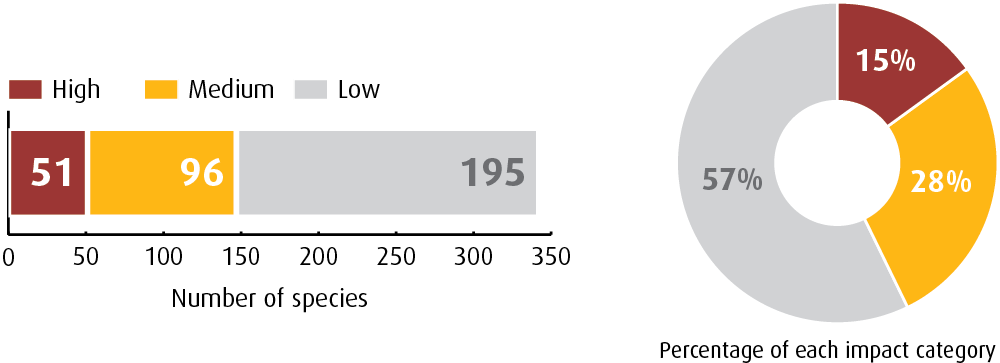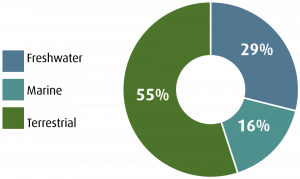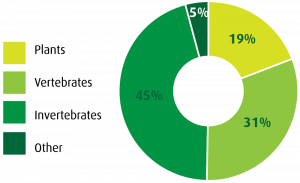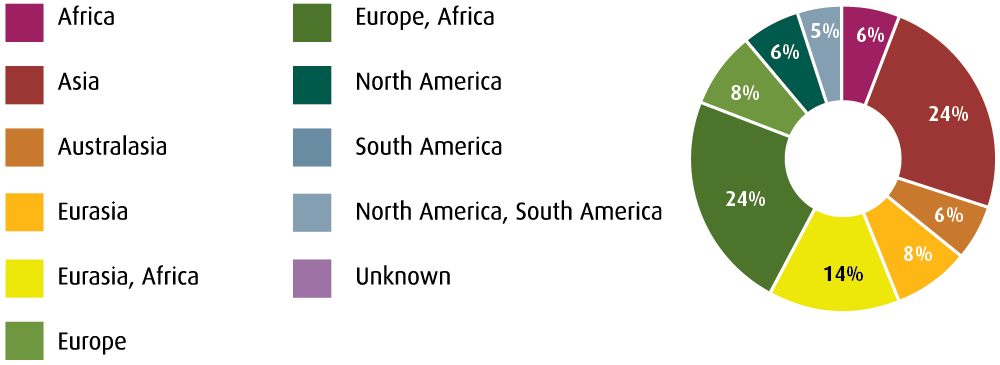Trends in introductions
Detecting trends in introductions is fundamental for assessing the threat from invasive species.
Trends in introductions can indicate if we have an increasing or decreasing flow of invasive [or alien] species into Ireland; what general habitat types are most at risk; what are the main pathways of introductions (if known); where are the native source areas for these species and detect possible future scenarios.
These indicators can then help inform policy and target action, education and awareness.
In 2014, a report titled ‘Ireland’s invasive and non-native species – trends in
introductions’ provides, for the first time in Ireland, an overview of the apparent trends in the introduction of invasive alien species.
Some of the key findings are:
- 13% of the alien species recorded and assessed in Ireland are high impact invasive species. This figure is comparable to other European countries
- 4 times as many species were recorded in the 20th Century as in the previous one
- The trend increased dramatically from 2001 to 2010 for high impact invasive species
- While the majority of species are found in the terrestrial environment the rate of increase in introductions is increasing for all environments with the greatest increase for the freshwater environment since 1980
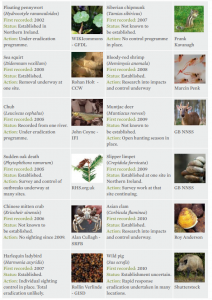
View the 12 invasive species with alerts issued for their detection in Ireland between 2000 and 2010 - Freshwater non-native species are more likely to be high impact invaders when they are introducedView the 12 invasive species with alerts issued for their detection in Ireland between 2000 and 2010
- To date, the majority of invasive species in Ireland are plants, but the future trend may be towards invertebrate and vertebrate species comprising a greater percentage of all new arrivals
- Most species are native to North America and Asia but future invasions of species native to mainland Europe is likely.
Limitations to the analysis are highlighted and 10 recommendations made for future work to fill key knowledge gaps.
Download report: https://invasives.ie/app/uploads/2022/01/NBDC-Trends-Report-2013_FINAL1.pdf
Selection of figures on the trends of non-native species from the Trends Report


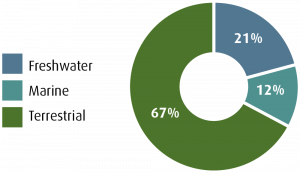
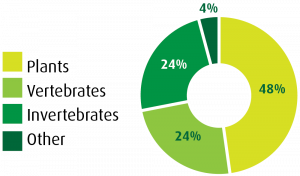

Selection of figures on potential future of introductions of non-native species to Ireland
From a horizon scanning exercise, a further 342 species were identified as potential invaders to Ireland.
